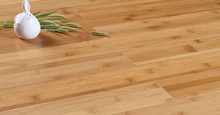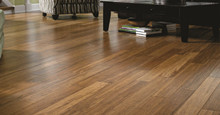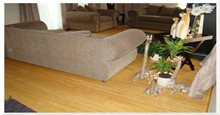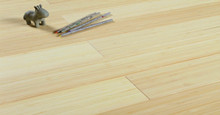As a flooring factory technologist living in Los Angeles, I’ve spent a lot of time around materials, finishes, and specs. But when it came time to renovate my own place, I realized I wanted something that combined durability, sustainability, and a rich, modern aesthetic. That’s when I landed on strand woven bamboo flooring in a dark color. It checks all the boxes—harder than red oak, environmentally friendly, and visually bold.
But I didn’t want to buy from a local distributor or retail brand. I wanted to go straight to the source: a flooring factory in China. Having worked in the flooring industry myself, I know that many of the products we see on U.S. shelves originate in Chinese factories. Buying direct seemed like a cost-effective and practical choice, especially for someone who knows what to look for.
Here’s what I uncovered through my research and experience.
Why Strand Woven Bamboo?
Before getting into logistics, let me explain why I chose strand woven bamboo over traditional hardwood or engineered flooring.
Hardness: Strand woven bamboo is among the hardest flooring materials available. It’s made by compressing bamboo fibers under extreme pressure with resin, resulting in a dense, durable plank.
Aesthetic: I was looking for a deep espresso or carbonized dark tone that offers contrast to lighter walls and adds a modern character to my condo.
Sustainability: Bamboo matures quickly compared to hardwood trees. It‘s a renewable resource that‘s well-suited to eco-conscious building.
Tariffs on Bamboo Flooring from China
One of the first questions I had was: what kind of import duties or tariffs will I face?
Based on the current Harmonized Tariff Schedule (HTS) codes and recent U.S. customs regulations, bamboo flooring from China typically falls under HTS Code 4412.99 or 4418.79, depending on the exact manufacturing process and product type.
As of my last check:
MFN (Most Favored Nation) duty rate: 0% for bamboo flooring under certain categories.
Section 301 tariffs: This is where it gets tricky. Due to ongoing U.S.-China trade tensions, many Chinese building materials are subject to an additional 25% tariff, including some types of bamboo flooring.
To know the exact rate, you’ll need to:
Determine the precise HTS code of the product.
Check the latest USTR Section 301 updates.
Possibly consult a customs broker or the CBP’s online HTS search tool.
In my case, the flooring I wanted did fall under the 25% additional tariff. That’s a significant cost, but still often cheaper than buying from a U.S. supplier with large markups.
Sourcing from a Chinese Factory
The next step was navigating the process of buying flooring directly from a Chinese manufacturer. Here’s how I approached it:
1. Finding the Right Supplier
I used platforms like:
Alibaba
Made-in-China
Global Sources
I narrowed my search to factories, not trading companies. I looked for:
Verified manufacturers
Experience in exporting to the U.S.
Certifications like FSC, ISO 9001, and FloorScore
I requested samples from three companies. This was essential—not just to judge the color and texture, but to assess their responsiveness and professionalism.
2. Customization and Specs
I provided the specs I needed:
Color: Dark carbonized tone
Size: 1850mm x 135mm x 14mm (standard plank)
Finish: Semi-gloss UV coating
Click-lock system: For easier installation
Moisture content: Below 10% (important for California’s climate)
After some back-and-forth, I chose a manufacturer in Zhejiang Province who offered competitive pricing and had prior U.S. export experience.
3. Payment and Shipping
I opted for:
Trade assurance (on Alibaba) to protect the transaction
30% deposit, 70% before shipment
For shipping, I had two options:
FOB (Free On Board): I arrange the shipping after the goods are loaded on the ship.
CIF (Cost, Insurance, Freight): The supplier handles shipping to my local port.
I went with CIF to Long Beach Port, and then worked with a local freight forwarder in Los Angeles who handled customs clearance and delivery to my home.
Lessons Learned
Buying flooring directly from China isn’t without its headaches, but it’s manageable with proper planning. A few takeaways from my experience:
Tariffs can be significant, but they don’t always wipe out the cost advantage.
Communication is key—be clear on specs, timelines, and terms from day one.
Samples are non-negotiable—they can save you from a costly mistake.
Freight and customs fees add up, so budget for more than just product cost.
Trustworthy logistics partners are essential for customs and delivery.
Now that the flooring is installed, I can say it was worth the effort. The rich, dark strands add warmth and sophistication to my space, and the durability gives me peace of mind. And there’s a certain satisfaction in knowing I sourced it myself, from factory to floor.



